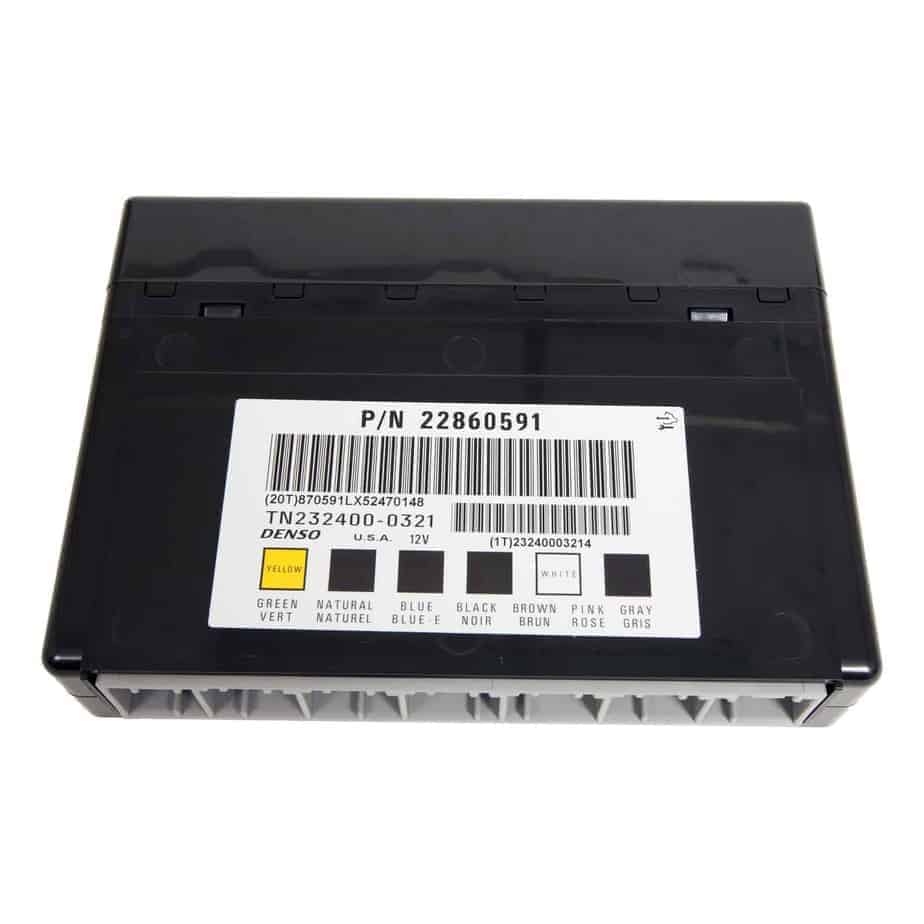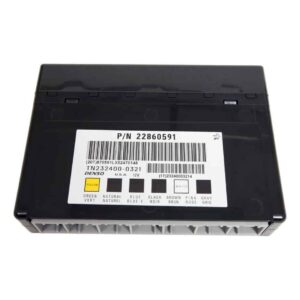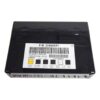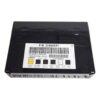Restore Peak Electrical Performance to Your Pontiac G8
Is your 2008-2009 Pontiac G8 suffering from strange and unpredictable electrical problems? As a technician with over two decades of experience, I’ve seen firsthand how a failing Body Control Module (BCM) can turn a reliable vehicle into a source of constant frustration. The BCM is the central command for your car’s body electronics, managing everything from your power windows and locks to the interior lights and security system. When it starts to fail, the symptoms can be maddeningly inconsistent.
This isn’t just a replacement part; it’s a complete solution. We take the guesswork and high dealership costs out of the equation. By providing us with your vehicle’s VIN at checkout, you’ll receive a BCM that is professionally programmed with the latest GM software updates specifically for your G8. This ensures seamless integration and restores the precise functionality you’ve been missing. Forget about paying for expensive programming services after the part arrives—this module is ready for installation right out of the box.
A Technician’s Notebook: The G8 with a Mind of Its Own
I remember a 2009 G8 GT that came into my bay with a list of complaints that seemed completely unrelated. The owner said the radio would randomly shut off, the dome light would flicker while driving, and sometimes the car wouldn’t recognize the key fob. He’d already replaced the battery and checked the alternator. My initial scan showed a dozen communication codes (U-codes) pointing to multiple systems. This is a classic sign of a network issue, and the BCM is the network hub. After verifying power and grounds to the module, we swapped in a pre-programmed BCM. Every single phantom issue disappeared. It’s a perfect example of how one failing component can create system-wide chaos.
Diagnosing a Faulty 2008-2009 G8 Body Control Module
A failing BCM can mimic other problems, making diagnosis tricky. If you’re a DIYer or a professional tech trying to pinpoint the issue, this module is often the culprit behind a host of electrical gremlins. The internal circuit boards and relays can wear out over time, leading to poor communication between your car’s various electronic systems.
Common Symptoms of BCM Failure
- ✔ Power windows, door locks, or mirrors operating erratically or not at all.
- ✔ Interior or exterior lights flickering, staying on, or not turning on.
- ✔ The security system acting up, causing intermittent no-start conditions (Security light on).
- ✔ Inaccurate gauge readings on the instrument cluster.
- ✔ Communication error codes, such as U0140 (Lost Communication With Body Control Module).
- ✔ The radio or climate control system randomly turning on or off.
A Straightforward Guide to BCM Installation
Installing your new, VIN-programmed BCM is a manageable job for a confident DIYer. For the 2008-2009 Pontiac G8, the BCM is typically located in the center dash area. While the core programming is done for you, some vehicles may require minor post-installation procedures.
- Safety First: Always disconnect the negative terminal from your vehicle’s battery before starting any electrical work.
- Locate the BCM: On the G8, you’ll generally find the BCM behind the passenger side of the center console or glove box area. Access may require removing a few trim panels.
- Disconnect and Remove: Carefully unplug the electrical connectors from the old BCM. They have locking tabs that need to be depressed. Once disconnected, unbolt or unclip the module from its mounting bracket.
- Install the New Module: Mount your new BCM in the same location and securely plug in all the electrical connectors. You should hear a ‘click’ as they lock into place.
- Reconnect Power: Reattach the negative battery terminal.
- Perform Relearns (If Needed): Turn the key to the ‘ON’ position and check all functions. If you see an airbag warning light or notice brake light issues, you may need to perform the ‘Airbag System Sync’ or ‘Brake Pedal Position Relearn’ procedures with a compatible scan tool. See our FAQ for more details.
Verified Vehicle Compatibility
This Body Control Module is a direct replacement for multiple part numbers and fits a wide range of GM vehicles. Please verify your vehicle is on this list. This unit is a confirmed fit for the 2008-2009 Pontiac G8 (located in the center dash).
It also fits the following models (location in parentheses):
Replaces Part Numbers: 10382479, 15093910, 15276271, 15299986, 15819552, 15828601, 15837419, 15872388, 15872421, 15880684, 15921352, 15921353, 15948438, 15948439, 20815898, 20839063, 20864767, 20864768, 20921435, 20921436, 20935349, 22860591, 25826124, 25826125, 25847588, 25847589, 25892622, 25910474, 25934762, 25934763, 95151084.
Frequently Asked Questions
Do I need to do any programming myself?
No. We program the module to your vehicle’s VIN before shipping. This handles the main setup, but some minor relearn procedures for systems like the airbags or brake position sensor may be required post-installation depending on your specific vehicle.
What is a core charge?
A core charge is a deposit you pay until you return your old part. We do not have a core charge on this BCM, so you can keep your original module without any penalty.
What happens if my airbag light comes on after installation?
This is a known possibility. It means the new BCM needs to be synced with the airbag’s Sensing and Diagnostic Module (SDM). A professional-grade scan tool is required to perform the ‘Setup SDM Primary Key in BCM’ procedure to resolve this.
Is this a difficult part for a DIY mechanic to replace?
For someone comfortable with removing interior dash panels and working with electrical connectors, it’s a very manageable job. The fact that we pre-program it removes the most difficult, tool-intensive step from the process.
How do I provide my VIN?
After you complete your purchase, you will need to send us your 17-digit Vehicle Identification Number (VIN). We cannot program and ship your BCM without it.
Will this fix my specific problem?
This part is a solution for vehicles properly diagnosed with a faulty BCM. While it resolves the common symptoms listed, we always recommend a thorough diagnosis by a qualified technician to ensure you’re replacing the correct part.



